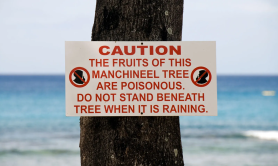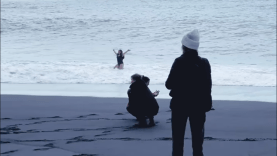

In many parts of the world extreme heat is not exactly extreme. Often it is quite normal. Like car problems.
Videos by Outdoors
Combining on the two can make for one very serious issue. It is more commonplace that maybe you realize. And while you think you may be acting in your own best interest to solve the problem alone, it is often not the case.
Survival expert Bear Grylls has one major tip for what to do — or perhaps not to do — if you find yourself in a rather difficult situation.
“If you ever break down, don’t leave your vehicle and try to walk off and get help,” he said. “I’ve heard so many stories of people doing that. They set off and think, ‘oh, it’s only five miles to the nearest town and I can take a shortcut from the map and if I cut across the desert here, I’ll find the town.’
“They totally underestimate how debilitating the real heat is. Then they are never found or their corpse is found days later. So the advice is, if you break down, stay with your car. Get in the shade outside your car.”
The second bit of advice may be just as important as the first.
Find shade and do not remain inside the car — especially if you have children with you.
Jan Null works at the Department of Meteorology and Climate Science for San Jose State University. Null has been tracking U.S. child vehicular heatstroke deaths since 1998 and the numbers are alarming.
Nulls work was cited by the NSC.org, and it reports that in both 2018 and 2019 a record number of 53 children died after being left in a hot vehicle. Additionally, the cite reports that the number of child hot car deaths, so far in 2022, is 29. On average, 38 children under the age of 15 die each year in the United State alone from heatstroke after being left in a vehicle.
While not abandoning the car is paramount, not staying inside the car may be just as vital.
“Get in the shade outside of the car,” Grylls said. “You can move around as the sun moves. But stay with the vehicle and try to flag down help.”









